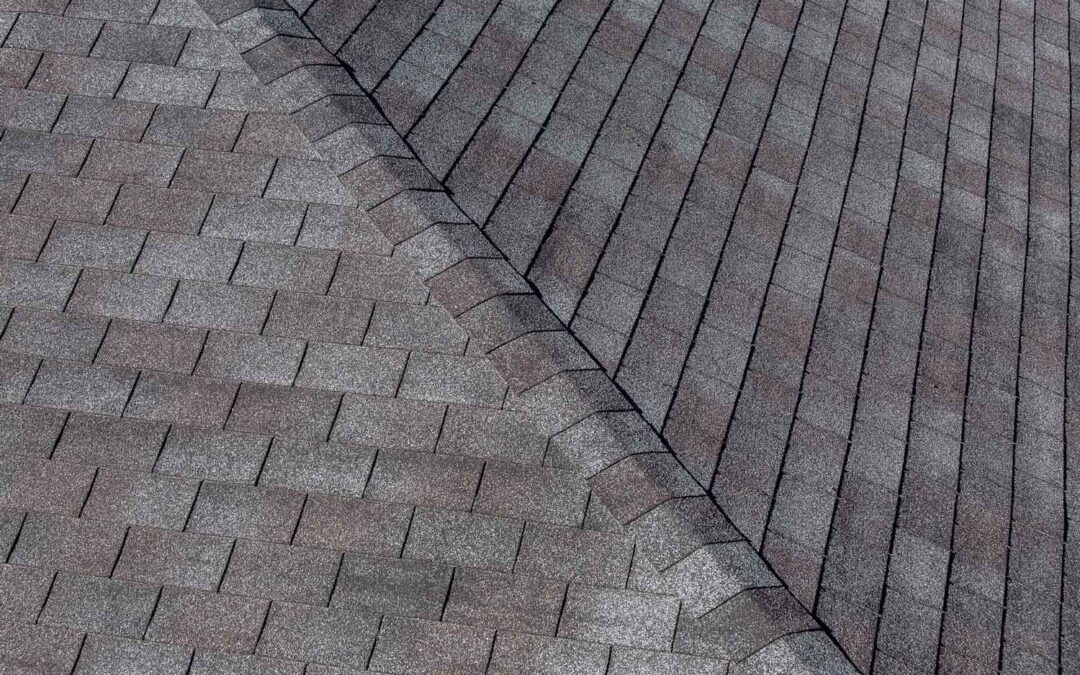Asphalt shingles are the top choice for roofing in the United States. They are appreciated for their affordability, durability, and ease of installation. But have you ever wondered how asphalt shingles are made? From the raw materials to the finished product that protects your home, manufacturing is a fascinating journey involving precision, engineering, and craftsmanship.
At Integrity Roofing and Painting, we believe that educating our customers about the products we install is as important as delivering high-quality roofing. By understanding how asphalt shingles are made, you can gain insight into the care and expertise that go into creating this essential roofing material. Let’s break it down and examine how these shingles come to life.
What Are Asphalt Shingles?
Asphalt shingles may seem simple, but they are engineered to withstand the elements while providing an attractive appearance to your home. They are composed of three primary elements: a base mat, asphalt, and mineral granules. These components create a robust, water-resistant layer shielding your roof from harsh weather. Whether you decide on fiberglass or organic shingles, the manufacturing process carefully balances science and skill.
The Raw Materials: Where It All Begins
The story of how asphalt shingles are made starts with raw materials. These materials must be carefully selected to guarantee the durability and performance of the final product. Here are the three key components:
- Base Mat: The base mat forms the foundation of the shingle. It can be made from either fiberglass or organic materials. Fiberglass mats are woven from glass fibers, which provide strength and fire resistance. Made from recycled paper or wood pulp, organic mats are saturated with asphalt to enhance their durability.
- Asphalt: A heavy, sticky substance made from crude oil. It serves as the waterproofing agent for shingles, keeping water out and protecting the underlying structure of your roof. The amount of asphalt used in each shingle determines its lifespan and weather resistance.
- Mineral Granules: These granules give the shingles their color, protect them from UV rays, and add a layer of fire resistance. The granules are typically made from crushed rock and coated in ceramic to increase their durability. Some shingles also incorporate algae-resistant granules designed to keep your roof looking clean and free of unsightly streaks.
Now that we’ve laid out the essential ingredients, let’s examine how asphalt shingles are made in the factory.
Step 1: The Base Mat Comes to Life
The first step in making asphalt shingles is creating the base mat. For fiberglass shingles, this starts with thousands of tiny glass fibers. These fibers are spun into a continuous sheet, which is then woven together to form a strong mat. The fiberglass mat is thin yet incredibly durable, offering protection and longevity.
The process is slightly different for organic shingles. Recycled materials like paper or wood pulp are processed into a dense mat. While organic shingles can offer good protection, fiberglass shingles have become the industry standard due to their superior fire resistance and strength.
Step 2: Saturating the Mat with Asphalt
With the base mat ready, it’s time to saturate it with asphalt. The mat is fed through rollers that coat both sides with hot, liquid asphalt. This step is essential because it makes the mat waterproof. Without this protective asphalt layer, water could easily penetrate the shingle, leading to roof damage and leaks.
As the mat is coated, the amount of asphalt used will vary depending on the shingle type. Premium shingles often receive a thicker asphalt coating, enhancing their durability and longevity. Once the mat is fully saturated, it’s cooled and solidified before moving to the next stage.
Step 3: Applying the Mineral Granules
Now comes the part that gives the shingles their distinctive appearance: applying the mineral granules. As the asphalt-coated mat moves down the production line, it passes under a machine that evenly distributes the granules across its surface. These granules add more than color—they also help protect the shingle from harmful UV rays, which can degrade the asphalt over time.
The granules are applied so that they stick firmly to the asphalt. This guarantees that the shingles can withstand years of sun, wind, and rain exposure. Some shingles receive an additional layer of specialized granules designed to resist algae growth. This is particularly beneficial in humid areas where algae can become problematic, discoloring roofs and diminishing curb appeal.
Step 4: Cutting and Shaping the Shingles
Once the granules are securely in place, the large sheet of asphalt-coated mat is ready to be cut into individual shingles. This step in the process of how asphalt shingles are made involves precise machinery that cuts the material into standard sizes and shapes. Depending on the shingle being produced, this could be the familiar three-tab shape or the more textured, dimensional look of architectural shingles.
Three-tab shingles have a uniform, flat appearance and are typically the most affordable option. Architectural shingles, also known as dimensional shingles, offer a more textured look that mimics the appearance of wood shake or slate. These shingles are thicker and often last longer, making them a popular choice for homeowners who want both durability and style.
Step 5: Quality Control and Packaging
The final step in the journey of how asphalt shingles are made is quality control. Before the shingles are bundled and shipped, they undergo rigorous tests. Manufacturers check for various performance factors, including impact resistance, flexibility, and durability in extreme temperatures. These tests guarantee that every shingle meets industry standards and is ready to protect your home.
Once the shingles pass these tests, they are stacked in bundles, wrapped, and labeled for shipping. Each bundle contains enough shingles to cover a specific roof area, making it easy for roofers to estimate how much material is needed for each job.
From Factory to Roof: The Final Product
And that’s how asphalt shingles are made! From the base mat to the final application of mineral granules, each step is carefully designed to create a product that offers reliable protection for your home. Asphalt shingles are not just a cost-effective roofing material—they’re also a durable and versatile option that can meet the needs of homeowners across the country.
At Integrity Roofing and Painting, we’re proud to install high-quality asphalt shingles that stand the test of time. Our team will walk you through the process, helping you select the right shingles for your home. With our expertise and commitment to quality, we’re here to ensure that your roof looks great and provides the protection you need for the future.
Schedule your free inspection today if you’re considering a roof replacement or repair. From the factory to your roof, Integrity Roofing and Painting is committed to providing lasting roofing solutions.

